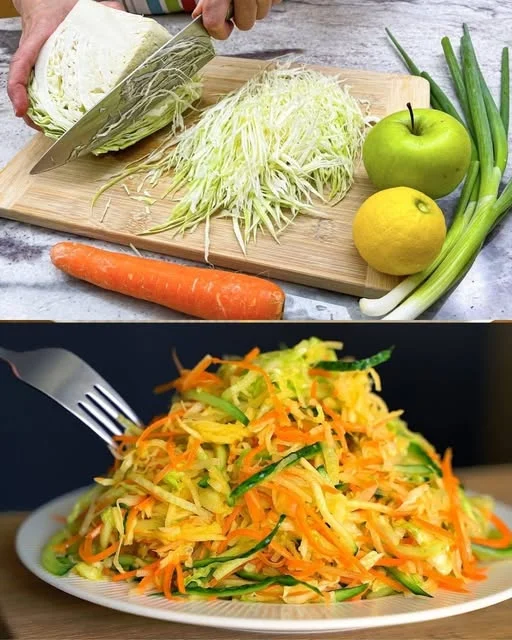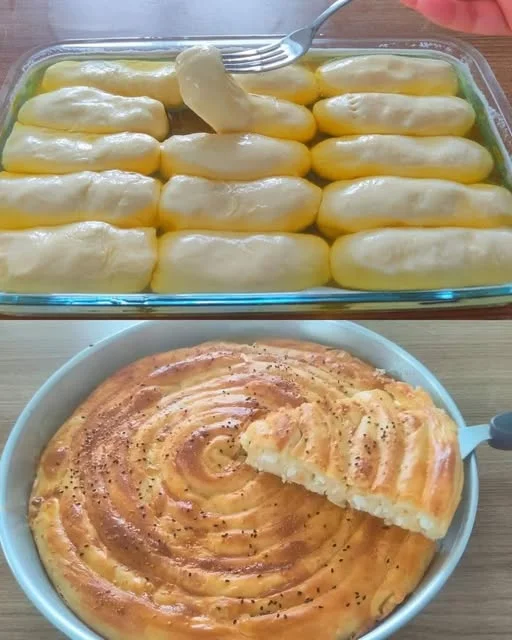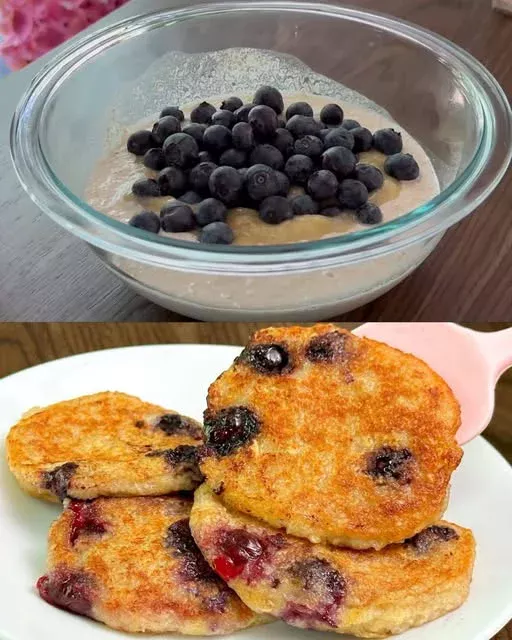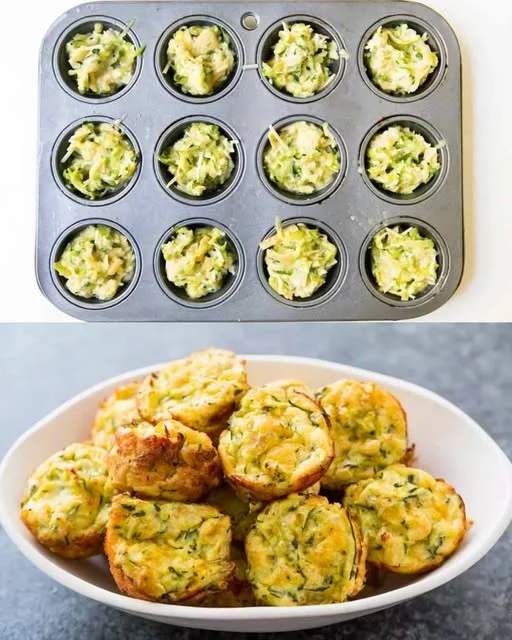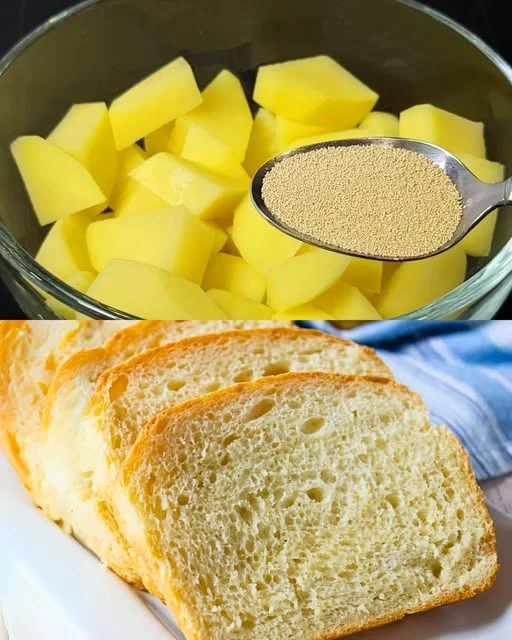Growing up, there was always something special about the dishes my grandmother would prepare on a lazy Sunday afternoon. The kitchen would be filled with the warmth of comforting aromas as she whipped up simple yet delicious meals. One of her favorites, which still holds a special place in my heart, was a tuna and egg bake. It wasn’t just a dish; it was a moment of connection, a way for her to bring the family together. Each bite, filled with the richness of tuna, eggs, and cheese, had the power to turn any gloomy day into something memorable.
As I’ve grown older, I’ve come to realize that the magic of that dish wasn’t just in the ingredients or the perfect combination of flavors—it was in the experience. A simple meal, made with love, can transform a moment into a cherished memory. This tuna and egg bake is more than just a recipe. It’s a way to recreate those warm, family-centered moments, reminding us of the power of food to bring comfort and joy.
Now, this recipe is one I often turn to when I need something quick, hearty, and full of flavor. It’s one of those dishes that brings a sense of nostalgia while still being incredibly easy to make. Perfect for a weeknight dinner, a weekend brunch, or a quick lunch, it is versatile, nutritious, and utterly satisfying.
A Simple Meal with Complex Flavors
When it comes to creating something that tastes as though it took hours to prepare, yet can be made in just a few simple steps, this tuna and egg bake is the perfect solution. The combination of tuna, eggs, cheese, and fresh spring onions creates a harmonious balance of flavors. The richness of the tuna and eggs, paired with the melt-in-your-mouth cheese, provides a comforting foundation. Fresh tomatoes add a burst of freshness, and the spring onions bring a subtle crunch and depth of flavor.
The beauty of this dish is its simplicity. It’s the kind of recipe that you can prepare with ingredients you likely already have in your pantry and fridge. There’s no need for complicated techniques or hard-to-find ingredients. In just a few steps, you can have a wholesome, nutritious meal that satisfies all your cravings without spending hours in the kitchen.
Why You’ll Love This Tuna and Egg Bake
1. Quick and Easy to Prepare
We all have those busy days where we need a meal that’s quick, satisfying, and doesn’t take a lot of effort. This tuna and egg bake is the perfect solution. In just a few steps, you can prepare a delicious meal that requires minimal prep time and little hands-on work. The tuna and egg filling comes together easily, and with just a short time in the oven, you have a warm, hearty meal ready to enjoy.
2. Nutritious and Filling
In today’s fast-paced world, finding meals that are both delicious and nutritious can be a challenge. But this recipe provides the best of both worlds. Tuna is an excellent source of protein, omega-3 fatty acids, and various vitamins and minerals, while eggs add additional protein and healthy fats. The addition of spring onions and tomatoes offers a good dose of fiber, vitamins, and antioxidants. With all these nutritious ingredients combined, this dish is not only tasty but also keeps you feeling full and satisfied.
3. Budget-Friendly
One of the best things about this tuna and egg bake is that it’s an affordable meal. Canned tuna is a cost-effective protein source, and eggs, cheese, and tomatoes are staples that most people already have in their kitchens. It’s a budget-friendly dish that doesn’t compromise on taste or nutrition, making it ideal for families or anyone looking to eat well without breaking the bank.
4. Versatile and Customizable
This recipe is highly adaptable to your tastes and preferences. You can switch up the cheese depending on what you have on hand—cheddar, mozzarella, or even a mix of both. You can also add extra veggies to the mix, such as bell peppers, spinach, or mushrooms. If you prefer a spicier kick, a sprinkle of red pepper flakes or a dash of hot sauce can easily be incorporated. The possibilities are endless, so you can make this dish your own.
5. Great for Meal Prep
This tuna and egg bake is an excellent option for meal prep. You can make a larger batch and store it in the refrigerator for up to 3 days, making it a convenient and delicious lunch or dinner option for the week ahead. Simply reheat in the microwave or in the oven for a quick and satisfying meal on busy days.
Ingredients
| Ingredient | Quantity |
|---|---|
| 1 can (160g/5.6 oz) tuna in water or oil, drained | 1 can |
| 2 hard-boiled eggs, chopped | 2 |
| 1 bunch spring onions, chopped | 1 bunch |
| 1/4 teaspoon black pepper, or to taste | 1/4 teaspoon |
| 70 grams (2.5 oz) cheese, grated (cheddar, mozzarella, or your preferred melting cheese) | 70 grams (2.5 oz) |
| 1 medium tomato, sliced | 1 medium |
Directions
- Preheat the Oven: Begin by preheating your oven to 375°F (190°C). Prepare a baking dish by greasing it lightly with oil or non-stick spray.
- Prepare the Ingredients: In a large mixing bowl, combine the drained tuna, chopped hard-boiled eggs, and spring onions. Season with black pepper to taste. Mix well to combine.
- Layer the Mixture: Spread the tuna and egg mixture evenly in the prepared baking dish. Top with a layer of sliced tomatoes, then sprinkle the grated cheese generously on top.
- Bake: Place the baking dish in the oven and bake for 20-25 minutes, or until the cheese is melted, golden, and bubbly.
- Serve: Once baked to perfection, remove from the oven and let it cool for a few minutes before serving. This dish is delicious served on its own or with a side of fresh salad or steamed vegetables.
Nutritional Information
| Nutrient | Per Serving (1 serving) |
|---|---|
| Calories | 250 |
| Total Fat | 15g |
| Saturated Fat | 5g |
| Carbohydrates | 5g |
| Dietary Fiber | 1g |
| Sugars | 2g |
| Protein | 21g |
| Sodium | 400mg |
Frequently Asked Questions
Can I use fresh tuna instead of canned tuna?
While canned tuna is often used for convenience, you can certainly use fresh tuna in this recipe. Just make sure to cook the tuna beforehand and flake it into smaller pieces before adding it to the dish. Fresh tuna will have a firmer texture, which may slightly change the final result, but it will still be delicious.
Can I use different cheese?
Absolutely! You can use any cheese you like in this recipe. Cheddar and mozzarella are great options for their melting qualities, but feel free to experiment with other cheeses like gouda, parmesan, or even feta. Each cheese will bring a unique flavor to the dish.
Can I make this dish ahead of time?
Yes, this dish can be made ahead of time and stored in the fridge for up to 3 days. It’s a great option for meal prepping. Simply reheat it in the oven or microwave before serving.
Can I freeze this dish?
While it’s best enjoyed fresh, you can freeze the baked tuna and egg casserole. Allow it to cool completely, then wrap it tightly in plastic wrap or foil before storing it in the freezer. To reheat, bake it in the oven until heated through, but note that the texture may change slightly after freezing and reheating.
What can I serve this with?
This dish is versatile and pairs well with a variety of sides. You can serve it with a light salad, steamed vegetables, or roasted potatoes for a well-rounded meal. It also goes wonderfully with crusty bread or a side of fresh fruit for a complete lunch or dinner.
Conclusion: A Simple Dish That Brings Comfort
The beauty of this tuna and egg bake lies not only in its simplicity but in the memories it creates. It’s a meal that brings people together and fills your home with warmth. Whether it’s a busy weeknight or a casual weekend brunch, this dish provides a delicious and satisfying solution that everyone will love. Its rich flavors and easy preparation make it a perfect go-to recipe for busy families or anyone looking to create a comforting meal in less time.
Cooking doesn’t always have to be complicated to be delicious. Sometimes, the most comforting and memorable dishes are the simplest ones. This tuna and egg bake is a perfect example of how a few staple ingredients, combined with love and care, can create something truly special. So, the next time you’re looking for a quick, nutritious, and flavorful meal, give this recipe a try. You’ll be glad you did.

The Comfort of Tuna and Egg: A Heartwarming Recipe to Bring Your Family Together
Ingredients
Method
- Preheat the Oven: Start by preheating your oven to 375°F (190°C). Grease a baking dish lightly with oil or non-stick spray.
- Prepare the Ingredients: In a large mixing bowl, combine the drained tuna, chopped hard-boiled eggs, and chopped spring onions. Add the black pepper to taste and mix everything together.
- Layer the Dish: Transfer the tuna mixture to the prepared baking dish and spread it out evenly. Layer the sliced tomatoes on top of the tuna mixture. Finish by sprinkling the grated cheese generously over the top.
- Bake: Place the baking dish in the oven and bake for 20-25 minutes, or until the cheese is melted, bubbly, and slightly golden.
- Serve: Once the dish is done baking, remove it from the oven and let it cool for a few minutes before serving. It’s perfect on its own or paired with a fresh salad or steamed vegetables.
Notes
- Storage: Leftovers can be stored in the refrigerator for up to 3 days. Reheat in the microwave or oven for a quick meal.
- Variations: Feel free to add additional vegetables like spinach, bell peppers, or mushrooms to customize the dish to your taste. You can also experiment with different cheeses for a unique flavor profile.
- Meal Prep: This dish is great for meal prep. Prepare it in advance and store it in airtight containers for an easy lunch or dinner throughout the week.


